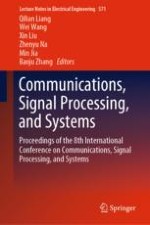2020 | Buch
Communications, Signal Processing, and Systems
Proceedings of the 8th International Conference on Communications, Signal Processing, and Systems
herausgegeben von: Qilian Liang, Prof. Wei Wang, Dr. Xin Liu, Prof. Zhenyu Na, Prof. Min Jia, Baoju Zhang
Verlag: Springer Singapore
Buchreihe : Lecture Notes in Electrical Engineering
